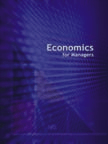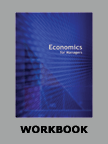Carrefour's Exit from South Korea
|
|
ICMR HOME | Case Studies Collection
Case Details:
Case Code : BSTR241
Case Length : 19 Pages
Period : 1995-2006
Organization : Carrefour
Pub Date : 2006
Teaching Note :Not Available
Countries : South Korea
Industry : Retailing
To download Carrefour's Exit from South Korea case study (Case Code:
BSTR241) click on the button below, and select the case from the list of available cases:

OR

Buy With PayPal
|
Price:
For delivery in electronic format: Rs. 400;
For delivery through courier (within India): Rs. 400 + Shipping & Handling Charges extra
» Business Strategy Case Studies
» Case Studies Collection
» Business Strategy Short Case Studies
» View Detailed Pricing Info
» How To Order This Case
» Business Case Studies
» Case Studies by Area
» Case Studies by Industry
» Case Studies by Company
Please note:
This case study was compiled from published sources, and is intended to be used as a basis for class discussion. It is not intended to illustrate either effective or ineffective handling of a management situation. Nor is it a primary information source.
Chat with us

Please leave your feedback

|
|




<< Previous
Carrefour Bids Adieu to South Korea Contd...
|
According to the President of E.Land, Kwon Moon-soon, "After a close inspection
of the discount store chain, the final purchase price has significantly gone
down."9 E.Land announced that instead of taking the competitors head on, it would
concentrate on modifying the existing hypermarkets into a specialized chain of
outlets, with a focus on fashion items.
Analysts opined that E.Land had a tough task ahead - that of integrating its
operations with those of Carrefour. According to Park Jong-Ryul of Kyobo
Securities10, "E.Land has a big burden. Including renovation costs, E.Land
will have to invest almost 2 trillion won, very high in relation to the asset
value of Carrefour."11
|

|
In a span of one decade, Carrefour's South Korean operations
recorded growth in revenues (Refer Table I for Carrefour's revenues in South
Korea between 2000 and 2005). However, this was not sufficient to meet the
expectations of the company's headquarters. On the departure of Carrefour (and
the subsequent departure of Wal-Mart12) from Korea, the South Korean media
reported that 'Native Korean retailers won a battle with the world's retail
Goliaths.'
|
|
Background Note
In the early 1950s, the grocery industry in France consisted mostly of
family-owned stores. Though there were some big department stores, these
charged exorbitant prices. At that time, the concept of free service13
was gaining popularity but very few stores in France were equipped to
allow shoppers to help themselves by providing them with trolleys,
displaying the items conveniently, giving them access to the items, etc.
In 1959, two entrepreneurs, Marcel Fournier (Fournier), a textile
retailer and Louis Defforey (Defforey), wine and food wholesaler, from
Annecy in Eastern France decided to establish a large discount
supermarket. |
Excerpts >>
|









